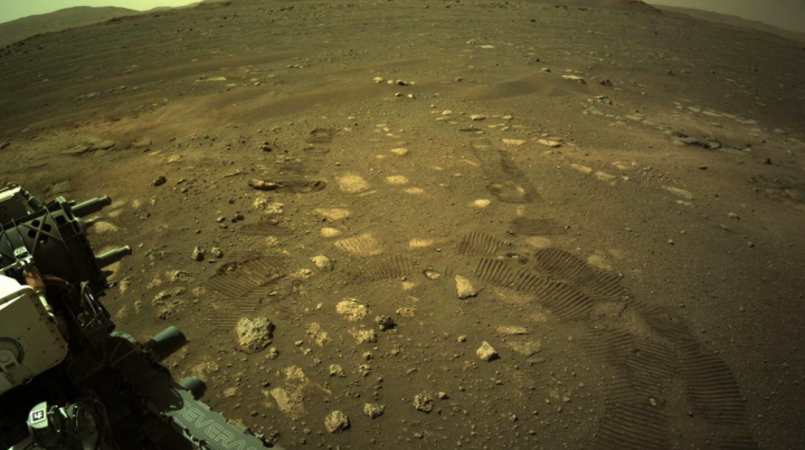
The American space agency's (Nasa) Perseverance rover has wiggled its wheels and undertaken its first drive across the surface of Mars.
Pictures downloaded to Earth on Friday indicate the excursion was a short roll and turn.
It's two weeks now since the one-tonne robot landed on the Red Planet.
Engineers have spent the time commissioning the vehicle and its many systems, including its instruments and robotic arm.
Perseverance's mission is to explore a near-equatorial crater called Jezero, to search for evidence of past life.
This will involve roving some 15km over the coming Martian year (roughly two Earth years).
Scientists want to reach a number of enticing rock formations in the crater that might retain a record of ancient biological activity.
Among these is what looks in satellite imagery to be a delta - a structure built up from the silt and sand dumped by a river as it enters a wider body of water. In Jezero's case, this wider body was very likely a crater-wide lake that existed billions of years ago.
But before Perseverance can get down to this work, it has an experiment to run. The robot is going to fly a small helicopter brought from Earth.
The rover will spend the next few weeks driving from its present location to a suitable stretch of terrain where the Ingenuity chopper can be put safely on the ground. At present, the aircraft is slung beneath Perseverance's belly.
